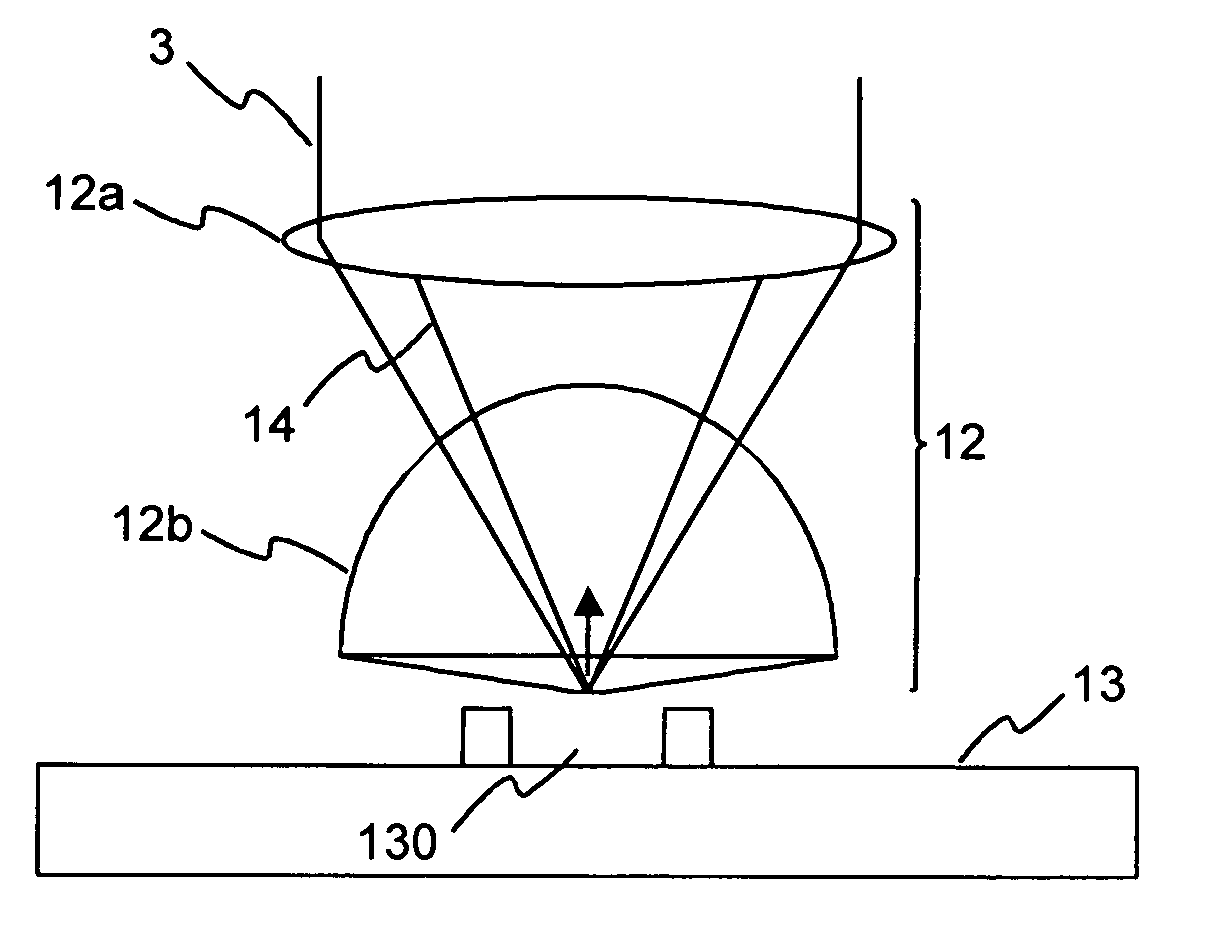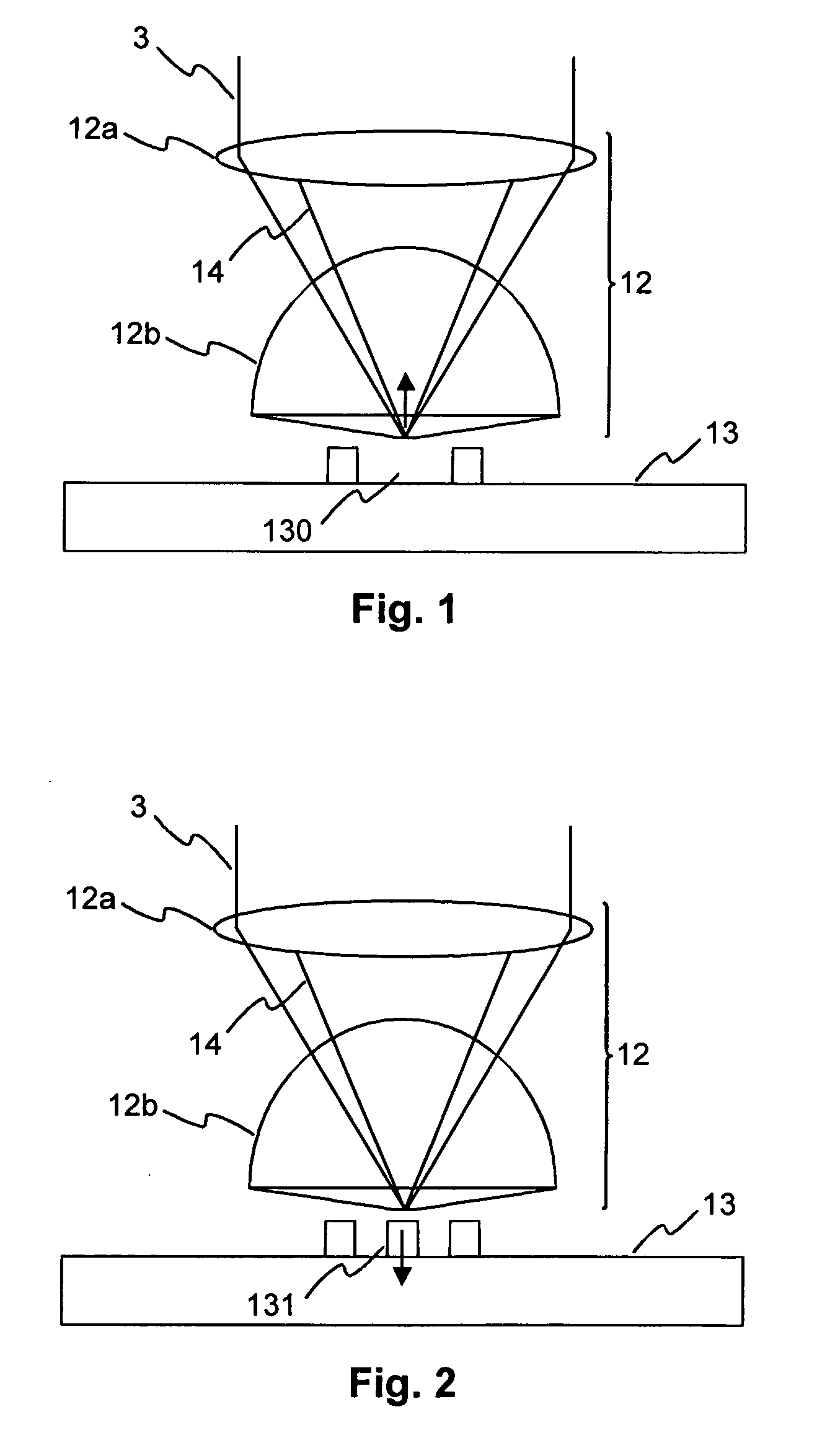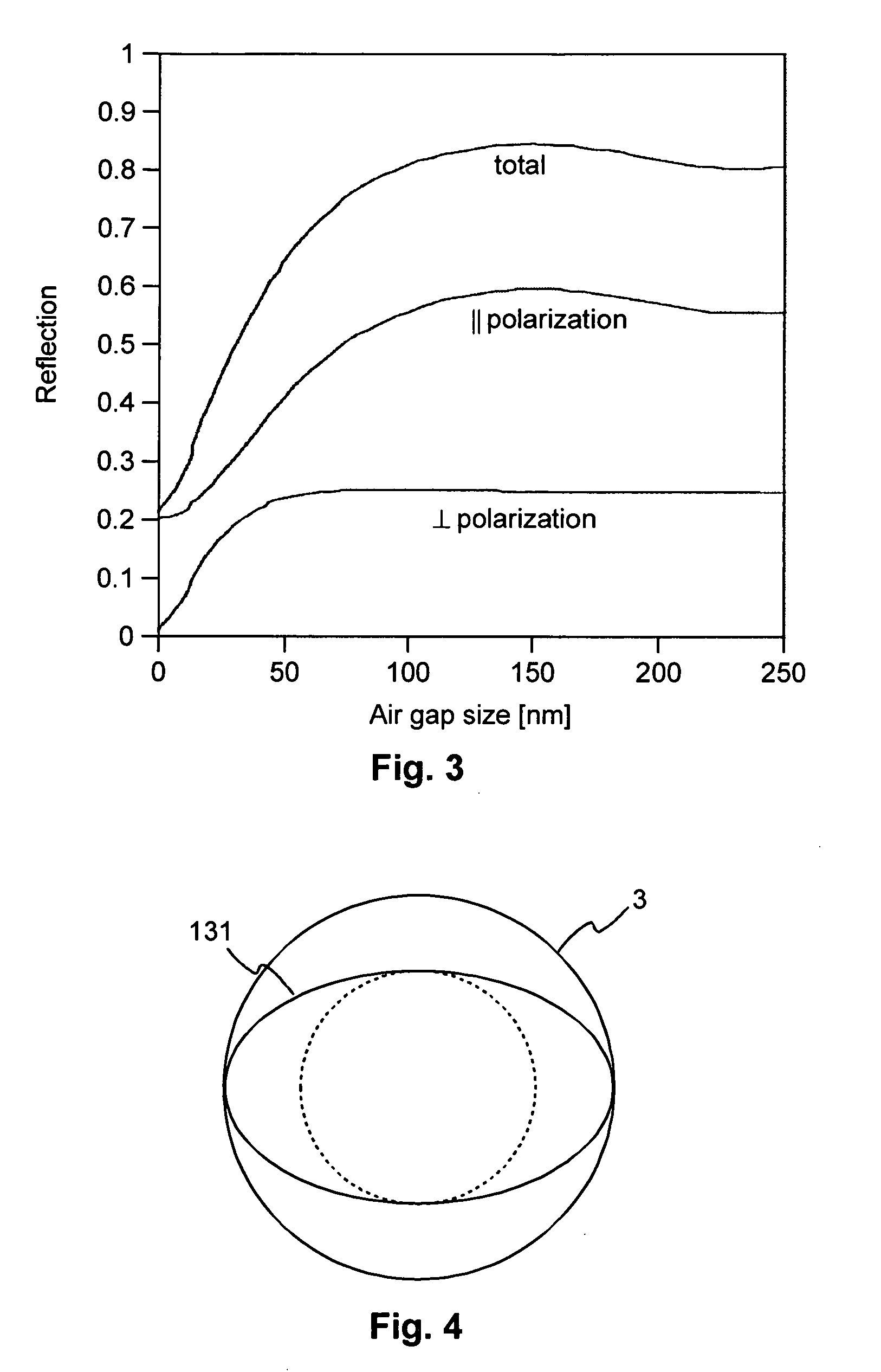Near-field optical recording apparatus, method and medium
a near-field optical recording and near-field technology, applied in the field of near-field optical recording apparatus, can solve the problems of cost and complexity of lenses, general limitations of optical data storage, etc., and achieve the effects of large width, reduced manufacturing costs, and reliable modulation of gap error signals
- Summary
- Abstract
- Description
- Claims
- Application Information
AI Technical Summary
Benefits of technology
Problems solved by technology
Method used
Image
Examples
Embodiment Construction
[0021]FIG. 1 shows a solid immersion lens 12b located above a gap 130 of a near-field optical recording medium 13. The solid immersion lens 12b and an objective lens 12a form a reading system 12, which directs a reading light beam 3 onto the surface of the near-field optical recording medium 13. A fraction 14 of the reading light beam 3 is totally reflected at the bottom of the solid immersion lens 12b. This fraction 14 is depicted by an annular cone. The amount of total reflection depends on the distance between the solid immersion lens 12b and the surface of the optical recording medium 13.
[0022]FIG. 2 depicts the solid immersion lens 12b located above a pit 131 of the near-field optical recording medium 13. If the pit 131 is sufficiently close to the solid immersion lens 12b, a part of the energy of the reading light beam 3 that is totally reflected at the bottom of the solid immersion lens 12b is coupled into the pit 131 and continues to propagate into the near-field optical rec...
PUM
| Property | Measurement | Unit |
|---|---|---|
| depth | aaaaa | aaaaa |
| depth | aaaaa | aaaaa |
| width | aaaaa | aaaaa |
Abstract
Description
Claims
Application Information
 Login to View More
Login to View More - R&D
- Intellectual Property
- Life Sciences
- Materials
- Tech Scout
- Unparalleled Data Quality
- Higher Quality Content
- 60% Fewer Hallucinations
Browse by: Latest US Patents, China's latest patents, Technical Efficacy Thesaurus, Application Domain, Technology Topic, Popular Technical Reports.
© 2025 PatSnap. All rights reserved.Legal|Privacy policy|Modern Slavery Act Transparency Statement|Sitemap|About US| Contact US: help@patsnap.com



